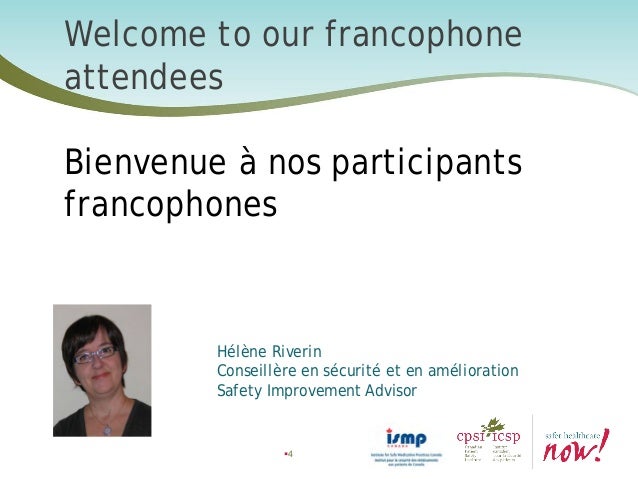Table of Content
The reconciliation process requires verification with the patient regarding their use of the prescribed medications. Additionally, there is much benefit to cultivating relationships with healthcare providers and care settings that patients frequently transfer to and from . This relationship-building can lead to standardized forms being developed and used across settings, or at a minimum, streamlined communication for as-needed consultations and clarification of information (ASHP & APhA, 2013). Home care providers can begin this relationship by regularly transmitting a reconciled list of medications to the patient's primary care provider and community pharmacist (ASHP & APhA, 2013). While the majority of discussion and examples within this toolkit focus on inpatient settings, post-acute care facilities can adapt the same concepts to strengthen or implement a medication reconciliation process.
Two studies by Pronovost and colleagues20, 21 examined medication reconciliation in the ICU. Examining discrepancies between medications a patient was receiving in the ICU and the discharge orders from the surgical ICU resulted in 94 percent of discharge orders needing to be changed. To complete a thorough medication reconciliation process, you need to follow this three-step process. While it might seem simplistic, in home care many times, this process can take a few days and several phone calls to get straight. The diligence of home care nursing staff is essential when rectifying medications with one or more providers. A patient was readmitted two days after discharge with severe hypoglycemia.
Medication Reconciliation: CMS Quality Measures to Know
The Institute of Medicine report Preventing Medication Errors1 found that currently most of the studies reported in the literature have small sample sizes and are single-site quality improvement projects. Multisite studies across the continuum of care are needed to assess the scope of the problem. Intervention studies using a variety of approaches, both paper based and electronic, are needed to determine the accuracy, feasibility, and simplicity of maintaining accurate lists of a patient’s medication history. In inpatient facilities, there are several situations where medication reconciliation is needed.
Let’s take a step back and review some important concepts and definitions related to medication reconciliation for older adults. The American Geriatrics Society defines geriatric patients as those 65 years or older. They comprise 14% of the population and purchase 33% of prescription drugs. The AGS predicts that this group will increase to 25% of the population and 50% of the prescription drug consumers by 2040. Prompts to complete required steps for medication reconciliation are essential.
Accomplishing Medication Reconciliation
Medication reconciliation has therefore become an example of a safety intervention that has been effective in research settings but has been difficult to implement successfully in general practice. A 2016 commentary identified the major reasons for difficulty achieving safety improvements via medication reconciliation. The commentary provides recommendations for organizations, clinicians, and researchers on how to better implement and evaluate medication reconciliation interventions. Many options in the health system aim to improve medication reconciliation and patient outcomes.

The patient developed atrial fibrillation shortly after hospital admission and required a transfer to the ICU . A diltiazem infusion was started and the patient's family physician became aware that the patient had not been receiving their antihypertensive medication and initiated an order for the metoprolol tartrate (). If an organization has a paper-based system, medication reconciliation forms should be kept in the medical record in a highly visible, specified location to serve as a reminder to perform medication reconciliation during the episode of care. Regardless of practice settings, clinicians need effective reminders at the appropriate times within their workflow for consistent behavior if true forcing functions are not possible. Medication reconciliation has been a subject of significant importance for many years, considering its role in helping reduce patient risk, improving outcomes, and reducing costs.
Geriatric medication reconciliation in the home setting
Geriatric medication management in the home is a complex and dynamic process. Taking a patient-centered communication approach, assessing patient cognition, and addressing medication feasibility during medication reconciliation can ultimately improve patient outcomes, functionality, and quality of life. Geriatric homebound patients may face barriers to medication management, such as cognitive impairment, caregivers who work other jobs, or task-intensive regimens that create adherence hurdles. To address these barriers, you’ll need to communicate effectively, assess the patient’s cognition, and consider medication feasibility. In 2016, Rose and colleagues reported some type of medication reconciliation discrepancy in 94% of geriatric patients. In addition to providing a complete list of a patient’s medications, accurate medication reconciliation can ultimately preserve the patient’s functionality.
Educate the patient on the signs of a drug interaction and what to do if they think they are having one. You need to communicate any potential serious interactions with the prescribing and primary physicians, too. For example, if you’re performing medication reconciliation and notice that a patient is on three pills for high blood pressure, you want to dig a bit deeper. Some patients need this type of duplication in therapies to get a combination effect.
Medications at Transitions and Clinical Handoffs (MATCH) Toolkit for Medication Reconciliation
PharmiWeb.com is Europe’s leading industry-sponsored portal for the Pharmaceutical sector, providing the latest jobs, news, features and events listings. The information provided on PharmiWeb.com is designed to support, not replace, the relationship that exists between a patient/site visitor and his/her physician. If you’re not already participating in medication education, I hope this article provides enough information and resources to help you get started. We can learn about the many tools that are available for medication management systems. We can work with the patient, family, nurse, OT, and PT to determine which system may work best.
Assess whether the prescribed medication is feasible for patients. For example, if they need to take furosemide for heart failure but have incontinence and immobility, they may be unwilling to take the diuretic. The furosemide timing may need to be adjusted, or strict fluid restriction might be a better answer. Ask them how they dispense the medication to themselves (for example, filling a 7-day pill container, taking each dose from the bottle).
The majority of articles were descriptive, and published studies were primarily quality improvement projects with small sample sizes limited to single clinical sites. As interactions can occur between prescribed medication, over-the-counter medications, or dietary supplements, all medications and supplements should be part of a patient’s medication history and included in the reconciliation process. Medication reconciliation remains an important process to ensure patient safety and quality of care across care settings. Medication reconciliation was named as 2005 National Patient Safety Goal #8 by the Joint Commission. Clearly there is a need for patients, families, health care providers, and pharmacies to have a single electronic medication record with everyone working from the same record and all medications being reconciled against this record. Electronic systems make it easier to access medication histories, but they need to be kept up to date, and information must be correlated with patients’ actual medication use.
While certain activities may be in our scope of practice, if they’re not within our scope of license, we shouldn’t be engaging in them. Over a million people visit the emergency department each year due to medication errors or side-effects. Why home health agencies are focused on medication education. Home health medication education can be a daunting challenge, and speech-language pathologists may be hesitant to participate. However, SLPs have unique expertise that they can offer in a variety of ways. No part of this website or publication may be reproduced, stored, or transmitted in any form or by any means, electronic or mechanical, including photocopy, recording, or any information storage and retrieval system, without permission in writing from the copyright holder.
If a patient can’t hear the discussion about how and why they’re taking a medication, adherence may diminish. Take steps to help the patient get the medical care to address these deficits. The Agency for Healthcare Research and Quality lists patient-centered care as one of the six dimensions of healthcare quality. On your next visit, have a focused conversation with your patient and their caregivers.

She was admitted three days prior for a respiratory infection and exacerbation of her COPD. While in the hospital they started her on steroids, which increased her blood sugar. She tells you that she’s not even sure what medications she is supposed to be taking any more. Sockolow P. S., Bowles K. H., Adelsberger M. C., Chittams J. L., Liao C. Challenges and facilitators to adoption of a point-of-care electronic health record in home care. We know how to assess and treat communication and cognitive-communication impairments.
When health care information is not integrated across settings, organizations, and among clinicians, it is not easy to validate or fill in the gaps from patient-reported information. Patients and family members may not be good historians of a medication record, and due to limited access to pharmacy records, only an incomplete recording of current medications may be obtained. Lau and colleagues8 compared community pharmacy drug lists with hospitalized patients and found 25 percent of prescription drugs in use at home were not recorded on the hospital admission record.

No comments:
Post a Comment